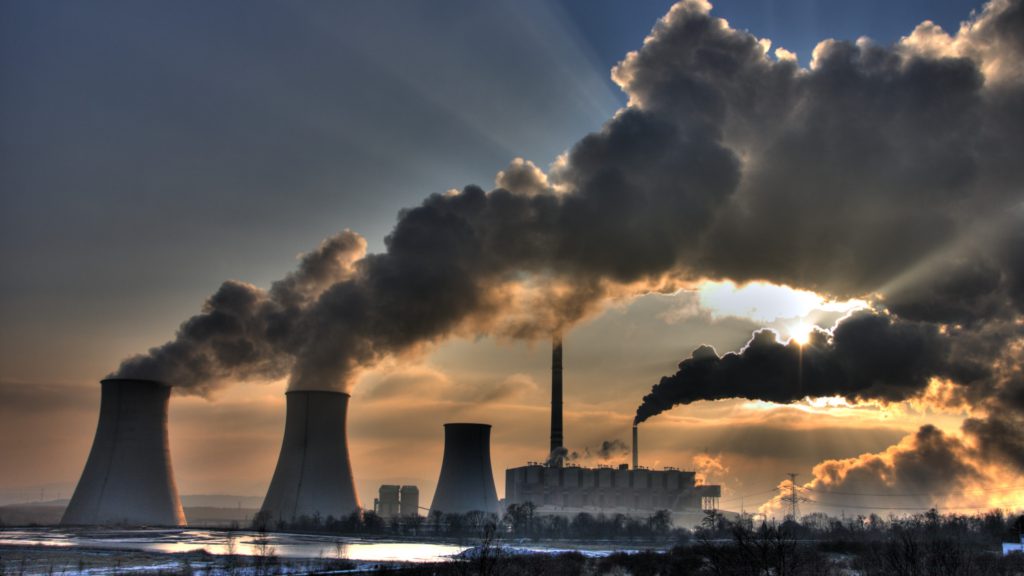
The Trump administration on Thursday attacked the legal basis of requirements to capture mercury and other heavy metal pollution from power plants, setting the stage for a court to potentially toss out the mandates altogether.
The Environmental Protection Agency issued a “supplemental finding” that concludes those Obama-era mercury pollution controls are too costly to justify and no longer “appropriate and necessary,” years after utilities complied with the requirements by installing scrubbers on coal-fired power plants.
Coal-fired power plants are the largest US source of mercury
EPA Administrator Andrew Wheeler argued the new measure is based on an “honest accounting” of the direct costs and benefits of controlling hazardous air pollution, following a Supreme Court ruling five years ago that the Obama administration had given them short shrift.
The new rule “corrects the flaws in the previous finding, while still maintaining the agency’s mercury emissions protections,” Wheeler told reporters in a conference call. Those requirements remain in place and “under this action, no more mercury will be emitted into the air than before.”
Although the existing Obama-era limits on mercury and other toxic air pollutants remain in effect, the EPA’s finding still will hand legal ammunition to critics seeking to undo them. That could include Bob Murray, a coal executive and benefactor of President Donald Trump who’s already spent years fighting the mandates in court.
The EPA’s rule comes against the wishes of power utilities that already spent some $18 billion complying with the requirements.
“While Administrator Wheeler claims that the agency will keep the existing mercury standards in place, the decision to go after the underlying basis for the standards is an invitation for industry to kill these vital rules in court,” said Rachel Cleetus, a climate and energy policy director at the Union of Concerned Scientists.
The EPA is asserting the mandates cost far more than the potential benefits from paring emissions of mercury, a metal that is converted in soil and water into a neurotoxin that can lower IQ, cause motor function deficits, damage the nervous system, and lead to more heart attacks.
According to the final rule, the costs of complying with the requirements are projected at up to $9.6 billion annually, while direct benefits are estimated to be as much as $6 million each year.
That’s a big shift from the previous analysis advanced by the Obama administration, which took a more expansive view of how the mercury controls would benefit society and justified them by relying heavily on side reductions of other air pollution tied to asthma attacks and premature deaths.
The new Trump administration approach, by contrast, limits its tally of benefits to only those directly tied to regulating mercury and other toxins — while excluding the so-called co-benefits of simultaneously paring soot.
“Under the Obama-era approach, the cost-benefit scales are set so that any regulation, regardless of costs, could always be justified,” Wheeler told reporters. “We believe this approach is not only dishonest but also counter to the Clean Air Act.”
But environmentalists accused the Trump administration of cherry picking data and ignoring the ancillary benefits of rules only when convenient. Richard Revesz, director of the Institute for Policy Integrity at New York University said it appeared the administration was willing to rely on such co-benefits when it “supports weaker regulations but ignore them when they would support rules protecting the health of Americans.”
Public health advocates said the EPA was unnecessarily jeopardizing the standards for controlling toxic air pollution.
The EPA action “could undermine the lifesaving standards” which “are preventing up to 11,000 premature deaths each year,” said Paul Billings, national senior vice president of the American Lung Association.
Coal-fired power plants are the largest U.S. source of mercury, and the 2012 pollution-control requirements prompted a wave of closures of the facilities. Coal miners have pushed the Trump administration to reverse the standards, arguing they unfairly discouraged power companies from burning the fossil fuel to generate electricity.
“The 2012 MATS rule was a pivotal, destructive and illegal assault on the coal industry that was ultimately struck down by the Supreme Court – but only after the compliance deadline had already passed,” the National Mining Association said in an emailed statement. “While the coal-fueled plants that were forced out of operation by this illegal rule can’t be resurrected, it’s an important lesson for the future: No rule should be justified on co-benefits alone, and regulation should never be used as a weapon to manipulate the energy market.”
The rule is expected to generate legal uncertainty for public power utilities — and even a risk that public utility regulators or courts will order some to stop operating the pollution controls that have been in place since at least 2016.
“We could see coal-fired power plants actually turning off scrubbers and other lifesaving air pollution controls that have been installed and paid for to meet MATS, just so Trump’s coal industry cronies can sell a few more tons of coal,” said Ann Weeks, legal director of the Clean Air Task Force.
The final mercury rule comes as the Trump administration races against the clock to lock in other pieces of the president’s first-term agenda — and help immunize the measures against easier congressional reversal next year. In recent weeks, the EPA also has finalized a rule easing fuel-economy standards and opted to maintain existing air quality limits for soot, despite public health advocates’ arguments both requirements are too lax.
(By Jennifer A. Dlouhy and Amena Saiyid)
Comments
Andrés sorribes
Coal? In 10-15 years from now hydrogen will be the King of energy…???